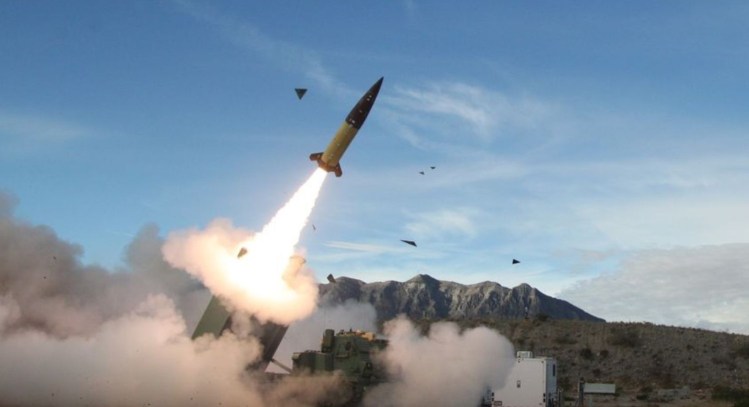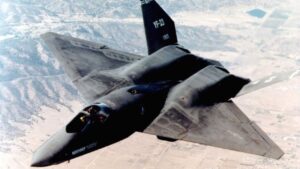On November 19, 2024, Ukraine executed a significant military operation by launching six U.S.-supplied Army Tactical Missile Systems (ATACMS) to strike a Russian ammunition depot in Karachev, Bryansk Oblast. This marked the first instance of Ukraine utilizing these long-range missiles against targets within Russian territory, following the U.S. government’s recent authorization for such actions.
Just yesterday, SOFREP wrote about how we had hoped President Zelensky would use discretion and not launch such an attack as it would greatly provoke the Russians. So much for wishful thinking. The missiles have been launched, the damage is done, and now we wait and see how the Kremlin will retaliate.
Background and Authorization
For over a year, Ukraine had been requesting, practically begging, the U.S. to permit the use of Western-supplied long-range weapons to target military installations inside Russia. In a pivotal policy shift, President Joe Biden approved the use of ATACMS for strikes within Russia, aiming to bolster Ukraine’s defensive and offensive capabilities. This decision, in our opinion, was likely not made by Biden himself but by his Democratic puppetmasters looking to leave a mess in the war between Russia and Ukraine.
Details of the Strike
The targeted depot in Karachev is located approximately 115 kilometers from the Ukrainian border and 190 kilometers north of the frontline in the Kursk region, where Russian forces have been actively engaged. The Ukrainian General Staff reported that the strike resulted in multiple secondary explosions, indicating the destruction of significant ammunition supplies. While Russia’s Ministry of Defense acknowledged the attack, it claimed that its air defense systems intercepted five out of six ATACMS missiles launched.
This attack occurred on the 1000th day of hostilities between Russia and Ukraine.
The Russian Defense Ministry put out the following statement regarding the attack:
On November 19, 2024, Ukraine executed a significant military operation by launching six U.S.-supplied Army Tactical Missile Systems (ATACMS) to strike a Russian ammunition depot in Karachev, Bryansk Oblast. This marked the first instance of Ukraine utilizing these long-range missiles against targets within Russian territory, following the U.S. government’s recent authorization for such actions.
Just yesterday, SOFREP wrote about how we had hoped President Zelensky would use discretion and not launch such an attack as it would greatly provoke the Russians. So much for wishful thinking. The missiles have been launched, the damage is done, and now we wait and see how the Kremlin will retaliate.
Background and Authorization
For over a year, Ukraine had been requesting, practically begging, the U.S. to permit the use of Western-supplied long-range weapons to target military installations inside Russia. In a pivotal policy shift, President Joe Biden approved the use of ATACMS for strikes within Russia, aiming to bolster Ukraine’s defensive and offensive capabilities. This decision, in our opinion, was likely not made by Biden himself but by his Democratic puppetmasters looking to leave a mess in the war between Russia and Ukraine.
Details of the Strike
The targeted depot in Karachev is located approximately 115 kilometers from the Ukrainian border and 190 kilometers north of the frontline in the Kursk region, where Russian forces have been actively engaged. The Ukrainian General Staff reported that the strike resulted in multiple secondary explosions, indicating the destruction of significant ammunition supplies. While Russia’s Ministry of Defense acknowledged the attack, it claimed that its air defense systems intercepted five out of six ATACMS missiles launched.
This attack occurred on the 1000th day of hostilities between Russia and Ukraine.
The Russian Defense Ministry put out the following statement regarding the attack:
“Last night at 3:25 (0025 GMT) the enemy struck a facility in the Bryansk region with six ballistic missiles. According to confirmed data, American-made ATACMS operational-tactical missiles were used.”

Russian Response and Nuclear Doctrine
In response to the strike, Russian President Vladimir Putin signed a decree updating Russia’s nuclear doctrine, effectively lowering the threshold for the use of nuclear weapons.
The revised policy stipulates that attacks on Russian territory using advanced Western-supplied weapons, such as ATACMS, could be considered acts of aggression warranting nuclear retaliation.
Needless to say, this is no small matter. As of this writing, Russia has approximately 5,580 nuclear warheads, making it the country with the largest stockpile of nukes in the world. About 1,700 of these are deployed strategic warheads, which are ready for use on various delivery systems, such as intercontinental ballistic missiles and submarine-launched ballistic missiles.
As a point of comparison, the US has about 3,700 nuclear warheads, with about 1,700 deployed on various delivery systems similar to the Russians.
Russia’s new nuclear doctrine states that “a conventional attack by a country with the support of a nuclear power would be seen as a joint attack. You don’t have to be an expert in foreign policy to interpret that as the Russians interpreting today’s strikes as a joint attack by Ukraine and The United States.
As reported by the Washington Post, Russian Foreign Minister Sergei Lavrov stated:
“the fact that ATACMS were repeatedly used against the Bryansk region last night is a clear signal that they want an escalation.”
Just for the record, Mr. Biden, the American people do not want an escalation. Please keep us out of World War III until Mr. Trump takes over.
And that’s not just hyperbole on my part. According to Russia’s Tass news agency, Vladimir Dzhabarov, first deputy head of the Russian upper house’s international affairs committee, has said, “This is a very big step towards the start of World War III.”
US Reaction
The U.S. administration has justified the authorization of ATACMS use by highlighting Russia’s recent escalations, including the deployment of foreign troops and the intensification of military operations. National Security Adviser Jake Sullivan emphasized that Russia’s actions have fundamentally changed the nature of the conflict, necessitating a robust response to support Ukraine’s defense.
Amazingly, Washington has thus far been all but mute concerning the attack. NPR quoted a U.S. official who was not authorized to speak to reporters. He simply confirmed that US made ATACMS were indeed fired into Russia for the first time.

Summation
Ukraine’s use of ATACMS to strike a military target within Russia marks a pivotal moment in the ongoing conflict, demonstrating a significant enhancement of Ukraine’s military capabilities. While this action aims to disrupt Russian military operations, it also introduces new complexities, particularly concerning Russia’s nuclear posture and the broader implications for regional and global security.
The international community continues to monitor these developments closely, recognizing the delicate balance required to prevent further escalation.



